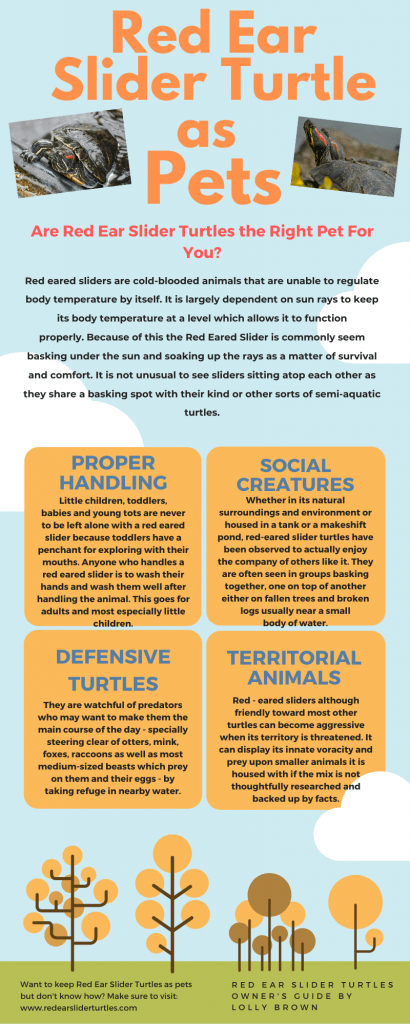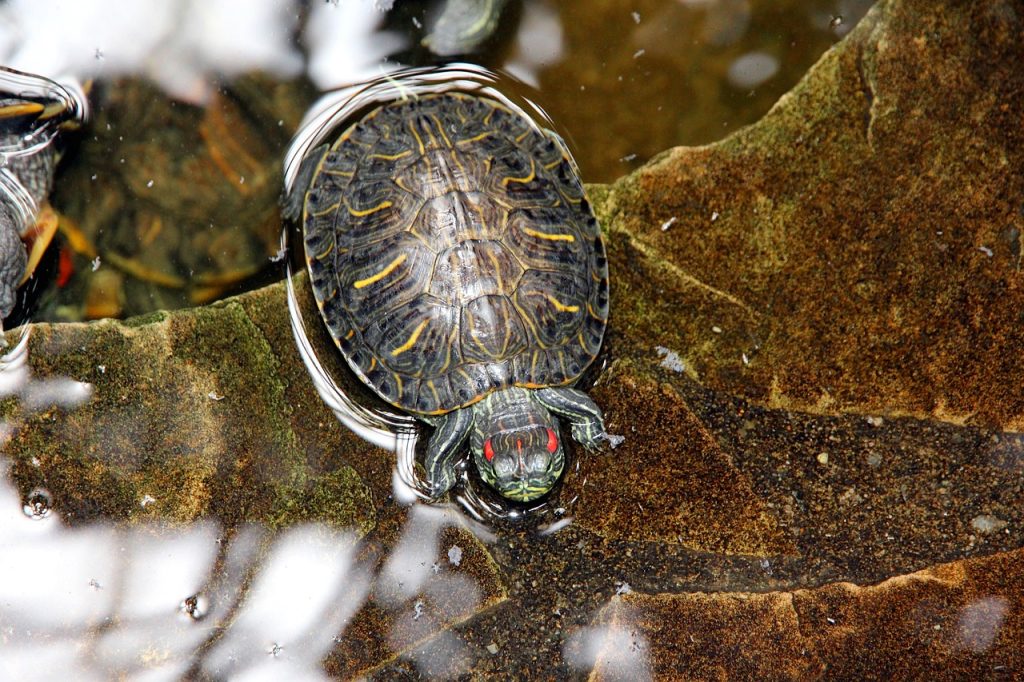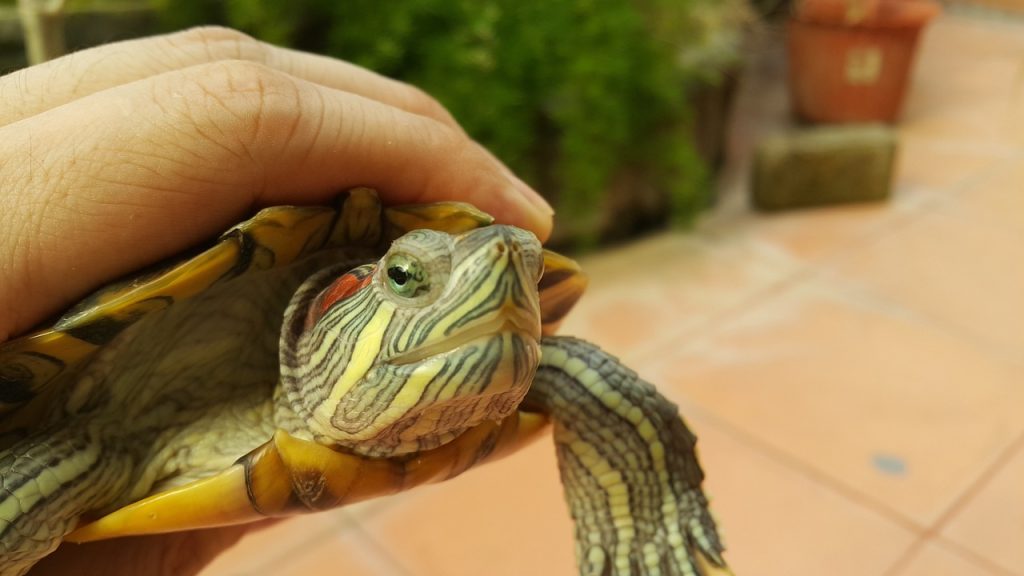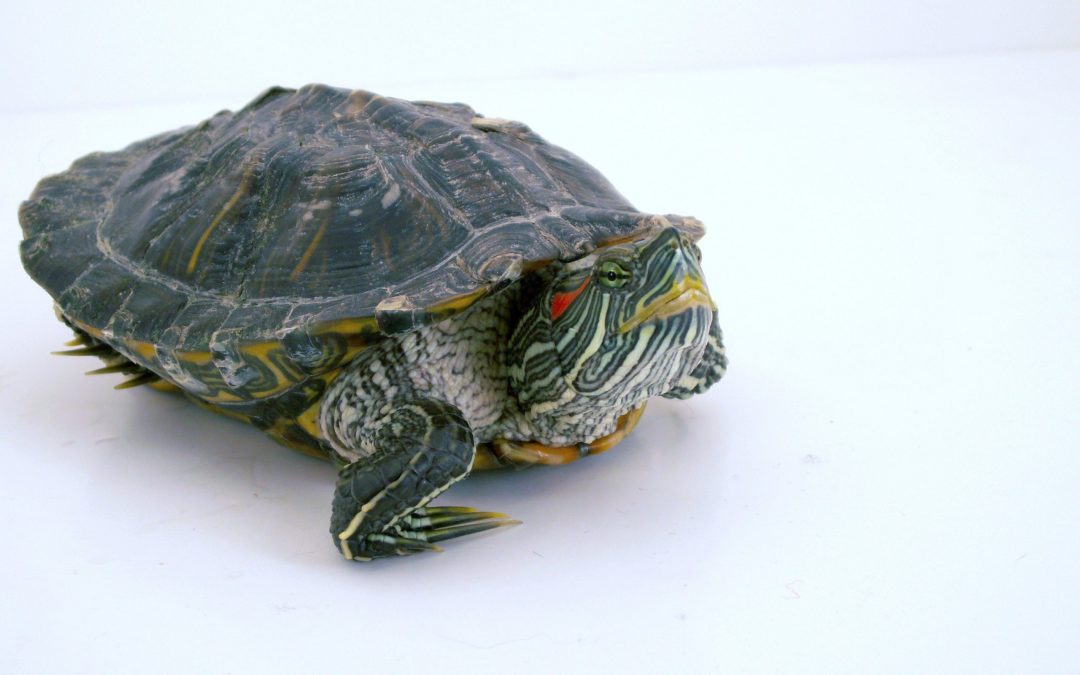What are the basic needs of red ear slider turtles? The Red Eared Slider Turtle is a strong, semi-aquatic turtle that gets its name from the wide reddish stripe behind its eyes. What are the basic needs of red ear slider turtles? Its body is a dark olive green and has thin yellow bars and stripes on the carapace; or the top of its shell, as well as its face and legs. What are the basic needs of red ear slider turtles? As the red eared slider matures the green coloration of the top shell becomes covered with black pigmentation making them almost appear black with no markings visible. This is especially true for males as the turtle’s age.
Basic Needs of Red Ear Sliders
What are the basic needs of red ear slider turtles? Providing habitation for a red eared slider turtle can be challenging at the onset of conception, design and execution. A hobbyist must consider a number of factors as it prepare a well suited environment for the new turtle pet.

Turtle Tank
The size of a turtle aquarium will depend on a number of considerations like the reptiles growth spurt; size of the reptile upon maturity; the area space it will need to thrive without anxiety or threat to its safety, as well as the possibility of sharing the space with other turtles or reptile species. These sun – baskers will require habitation closely resembling their natural environment which is warm and with deep enough water for them to dive and swim. This area should also have a dry and warm spot where they can lounge, bask in peace and for females, to lay hatchlings.

Lighting & Temperature
The air temperature in the general location of the aquarium must be kept at approximately 75 degrees Fahrenheit constantly. An infrared bulb may be used if the temperature in the general area of the aquarium is colder.
Basking Spot
An incandescent bulb of 75 watts or lower will be sufficient for the turtles basking spot and will emit enough heat and warmth the turtle requires. The basking spot temperature should be an ideal 85-90 degrees Fahrenheit closest to the bulb. An acrylic or glass housing should not be placed directly where the sun shines as this may get too warm.
Humidity Levels
The Red Eared Slider requires water to be at a 75 – 85 degree Fahrenheit. Keep in mind that the turtle is a cold-blooded animal unable to regulate body temperature on its own. Should temperatures plummet their metabolism will slow down; and they will be rendered inactive if the water temperature becomes too cold which could also have a bad effect on their digestive systems resulting in health issues for the turtle.
A submersible water heater can be used to maintain the ideal temperature of the water; which should be on a thermostat. You will need an estimated 5 watts per gallon of water. Be certain that the thermometer is set below the water line; and do not forget to switch this off when bailing water out of the tank. Follow the manufacturer’s directions and guidelines to avoid electrocution.
Keeping the Tank Clean
What are the basic needs of red ear slider turtles? Regularly replace the water with fresh water making sure you achieve the proper habitat temperature of the tank before placing your turtle back inside. You will also want to use a de – chlorinating agent to treat the water before filling in the tank. Utilize a siphon to remove 25-50% of the water in the aquarium; using it like a vacuum to suck out the dirty liquid and dirt particles trapped on the aquarium bed.
The whole aquarium must be drained; cleaned and refilled with filtered, de – chlorinated water every 1 to 2 months depending on the aquarium conditions. Do not ever attempt to manually start the siphoning process with your mouth. You will not only gain a mouthful of funk and gunk; you would have also exposed yourself to a host unwanted, sickening bacteria.
Feeding Your Red Ear Slider

What are the basic needs of red ear slider turtles? Feeding your turtle outside of the tank in a separate feeding tank saves you a great deal of work by minimizing the incidence of food particles in the water; should this be your choice of feeding method the water will need to be replaced once a week at a minimum.
Think of adding aquatic plants to your turtle’s habitat. Not only will it make the aquarium look livelier; the aquarium plants will also be perfect hiding nooks and a good source of turtle snack and could possibly assist in removing and minimizing waste from the water. Think about using an air stone to help water circulation and provide better filtration.
Turtle Pellets
Commercially bought turtle pellets can provide a sufficient base diet for the red ear slider; but this should be supplemented with a diversity of other foods to meet its overall nutritional requirements.
Veggies and Fruit
Greens and vegetation are to make up the other part of the red eared slider turtle’s diet. Offer it vegetables in the form of mustard greens, collard greens, dandelion greens, bok choy and kale. Keep iceberg lettuce off its diet as it has very little nutrition. On the other hand, dark green lettuces, like romaine lettuce, should be given sparingly.
A potential red eared slider turtle caregiver can opt to put aquatic plants in the aquarium; or pond which the turtle would usually favor to snack. Plants like the submerged anacharis are often to its liking as with water lettuce, duckweed; azolla or fairy moss, frog-bit and water hyacinth. Other acceptable vegetable to add to its diet would be carrots, green beans and squash.
Turtle Supplements
What are the basic needs of red ear slider turtles? Look for a good reptile multivitamin which contain a sufficient amount of calcium and vitamin D3. Another good way of giving it additional calcium is placing a cuttlebone in its tank. Just affix the cuttlebone to the tank with the use of suction cup clips; or just have it float in the water. Watch below for more info about red ear slider turtles:


 Author and long-time animal lover. Sharing knowledge on pet care through experience and the written word.
Author and long-time animal lover. Sharing knowledge on pet care through experience and the written word.